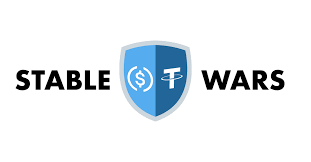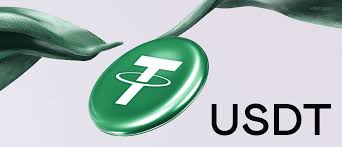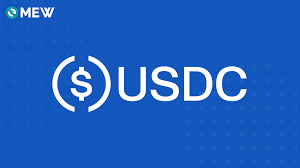The Stablecoin Wars: USDT, USDC, and New Entrants, Fighting for Global Dominance

When a financial system begins to fracture, stability becomes the most valuable commodity. In the world of cryptocurrencies, a space born from volatility and speculation stablecoins emerged as the calm in the storm. Pegged to fiat currencies like the U.S. dollar, they offered something rare in crypto: predictability. But today, that stability is being challenged, as an entirely new war for digital dominance unfolds between Tether (USDT), USD Coin (USDC), and a wave of next-generation challengers that could redefine how value moves across the globe.
This isn’t just a crypto story. It’s a reflection of how trust, not code, has become the new currency in the digital economy.
USDT: The Reluctant King
In the beginning, there was Tether and for nearly a decade, it has remained the undisputed leader of the stablecoin universe. With a market cap exceeding $110 billion as of late 2025, USDT processes more trading volume than Bitcoin itself. It powers the liquidity of global exchanges like Binance, OKX, and Bybit, acting as the settlement layer for nearly every major crypto trade.
Its strength lies in its ubiquity. From bustling trading floors in Singapore to informal P2P markets in Lagos, traders reach for Tether because it works fast, liquid, and widely accepted. In countries where access to the U.S. dollar is restricted or inflation is rampant, USDT has quietly become a de facto digital dollar.

Yet, its reign hasn’t been without controversy. For years, critics questioned Tether’s reserve transparency, accusing it of obscuring the true backing behind its tokens. While the company has since begun publishing attestation reports and diversifying its reserves into U.S. Treasuries, the trust deficit lingers. But here’s the irony, even amid skepticism, users continue to rely on it. Because in the world of crypto, liquidity often outweighs idealism.
USDC: The Institutional Favorite
If Tether is the rebel king, USD Coin (USDC) is the polished diplomat. Issued by Circle, a U.S.-based fintech company, USDC has built its reputation on compliance, transparency, and partnership with the traditional financial system. Every USDC is backed by a corresponding dollar or U.S. Treasury, and its reserves are verified by leading auditing firms.
Circle’s collaboration with Visa’s crypto payment pilot further signals a new era of corporate legitimacy for stablecoins. USDC has found its niche among institutional investors, fintechs, and developers who value regulatory alignment over the Wild West of unregulated liquidity.
However, that same legitimacy became a double-edged sword during the Silicon Valley Bank collapse of 2023. When Circle disclosed that $3.3 billion of its reserves were trapped in the failing bank, USDC briefly depegged, dropping to $0.88. Within days, Circle recovered the funds and restored the peg but the incident highlighted how even the “safe” stablecoins aren’t immune to the fragility of traditional banking.

Still, Circle used the crisis to push for a more transparent model, offering real-time reserve updates and stronger partnerships with U.S. regulators. For many, USDC is the embodiment of what stablecoins could become a bridge, not a break, from the traditional system.
The Rise of the New Challengers
While USDT and USDC remain the pillars of the market, the new contenders are bringing fresh innovation and localized strategies.
Take First Digital USD (FDUSD), a Hong Kong–based stablecoin designed to comply with Asia’s emerging crypto regulations. Within months of its launch, it became deeply integrated with Binance, which now supports FDUSD pairs across hundreds of markets. This partnership immediately positioned it as a credible rival, especially in jurisdictions where Tether faces scrutiny.
Then came PayPal USD (PYUSD) perhaps the most significant mainstream entrance into the stablecoin arena. Issued by Paxos and backed by the full brand power of PayPal, PYUSD represents a pivotal shift. It’s not just a crypto asset; it’s a digital extension of one of the world’s largest payment networks. For the first time, millions of non-crypto users can interact with stablecoins through an app they already trust.
Together, these entrants are reshaping how people perceive stablecoins not as speculative tools but as digital dollars for everyday use, from remittances to payrolls and micro-commerce.
The Global Stakes
Stablecoins are more than just a financial instrument, they’re becoming the infrastructure for global money movement. According to CoinMetrics, stablecoins now settle over $8 trillion annually, rivaling traditional systems like SWIFT in transaction volume.
Across Africa, Asia, and South America, stablecoins enable cross-border payments where banks are either too slow or too expensive. In Nigeria, USDT transactions form the core of the informal crypto remittance market, while in Argentina, citizens use stablecoins as a hedge against inflation. These tokens have quietly evolved into digital lifelines for millions.

However, their very success has invited regulatory tension. Governments worry that if citizens start saving and trading in stablecoins instead of local currencies, it could erode national monetary sovereignty. That concern has led to calls for central bank digital currencies (CBDCs) as state-controlled alternatives. Yet, CBDCs often lack the privacy, interoperability, and cross-border functionality that make stablecoins appealing.
The result is a complex tug-of-war between innovation and control, freedom and oversight.
The Regulation Question
In Washington, debates around stablecoin regulation have intensified. The U.S. House Financial Services Committee has introduced bills proposing that stablecoin issuers hold reserves entirely in cash or U.S. Treasuries, and operate under federal charters. Meanwhile, the European Union’s MiCA framework (Markets in Crypto-Assets) has already set a precedent by classifying stablecoins as e-money tokens subjecting them to the same scrutiny as banks.
But regulatory acceptance could be a double-edged sword. While it may bring legitimacy and investor protection, it could also stifle innovation and limit smaller startups from competing. The balance between innovation and oversight remains the defining challenge of the stablecoin era.
While the U.S. dollar still dominates, a new generation of non-USD stablecoins is emerging. Projects like EURC (Euro Coin), XSGD (Singapore Dollar), and even experimental KES-Coin (Kenyan Shilling) are localizing the concept of digital stability.
In Africa, for instance, regional fintechs are experimenting with stable tokens pegged to the naira or cedi, creating digital assets that can operate across borders while maintaining local relevance. This de-dollarization trend could eventually transform how developing economies engage with digital finance turning stablecoins into a tool for financial independence, not dependency.
Behind every stablecoin transaction lies a web of blockchain networks, Ethereum, Tron, Solana, and BNB Chain each hosting billions in circulation. Tron alone now supports over $50 billion in USDT, primarily due to its low fees and speed, making it the go-to chain for users in emerging markets.
These blockchains form the invisible plumbing of the new digital economy, where money moves as freely as data. And as more businesses integrate on-chain payment systems, stablecoins could soon underpin supply chains, freelance payments, and international settlements, bypassing traditional banks entirely.
The Stablecoin Wars aren’t just about who wins the market; they’re about who gets to define trust in a digital world.
Tether remains unmatched in adoption, Circle commands credibility, and PayPal brings institutional access. But the real winner might be the one that manages to balance speed, regulation, and real-world usability turning stablecoins from crypto assets into the future infrastructure of global commerce.
As the dust settles, one thing becomes clear: the next era of finance won’t be built on speculation, but on stability that people can see, verify, and believe in.
In a world searching for financial certainty, stablecoins may not just be another chapter in crypto, they could be the new foundation of the internet’s economy.
You may also like...
UCL Chaos: Lookman's Fiery Clash With Coach Juric Ignites Debate!

A heated touchline altercation between Super Eagles forward Ademola Lookman and Atalanta manager Ivan Jurić during a Cha...
Osimhen's UCL Thunderstrike: Nigerian Star's Hat-trick Stuns Ajax, Rewrites History Books!
)
Super Eagles striker Victor Osimhen scored a historic hat-trick, leading Galatasaray to a dominant 3-0 Champions League ...
Gremlins 3 Unleashes Official Release Date, Fans Rejoice for November 2027 Return!

Warner Bros. is officially reviving the iconic “Gremlins” franchise with “Gremlins 3,” slated for a November 2027 releas...
Ninajirachi Scoops Coveted 2025 Australian Music Prize!

Ninajirachi's debut album, "I Love My Computer," has won the 21st Australian Music Prize, securing A$50,000 and cementin...
Metallica Electrifies Adelaide Stage, Unleashing Iconic Covers!

Metallica's M72 World Tour is electrifying fans across Australia and New Zealand, with the metal giants paying homage to...
Royal Comeback! Meghan Markle Returns to Acting, 'Swamped With Offers'

Meghan Markle is making a notable return to Hollywood, starring as herself in the comedy film "Close Personal Friends" c...
Ayr Care Village Scandal: Critics Blast Project as 'Failure From The Start'

A proposed £40 million care village in Ayr town centre has been scrapped due to a critical lack of funding from NHS Ayrs...
Tanzania Plunges Deeper into Economic and Social Crisis Amid Post-Election Turmoil

Dar es Salaam, Tanzania, is in crisis following disputed presidential elections, leading to widespread violence and a cr...





